The Charms of Binh Tay Market (and A Peek into Cholon's Past)
When you visit any country in Asia, you will always hear recommendations of visiting a local market.
It is just so common and in fact, is part of the Asian lifestyle.
Asians love their markets; the morning market where they get their fresh produce, the night market where they enjoy that stroll and browsing through the curios on sale while snacking on street food, theme markets which are specific such as the Flower and Jade Market in Hong Kong; well, basically, just markets.
It is a phenomenon, it is the culture.
You can't go to Asia and leave without visiting any market.
It will not justify your experience.
In fact, it wouldn't even count that you have actually been to Asia, if you have not been to a market.
I am serious.
We do not joke about our markets.
I am not a big fan of markets; a fact that I have not failed to mentioned repeatedly on my blog (even on my old blogs) over the years.
However, growing up in Asia and having visited the different countries (and neighbors) in the region, I can safely attest to the fact that Asians, love their markets.
Asians take their markets very seriously.
In fact, the love has even spread to the extent of boosting the tourism.
For generations now.
Even tourists, from other parts outside Asia, look forward and share that same enthusiasm and joy when it comes to visiting an Asian market.
Vietnam, being part of Asia, is no exception.
There are just so many markets around; small and local, to the big and commercial ones that you won't know where to begin.
However, do your research with the travel guides and simply, even Google, will point you with plenty of resources.
There are always those that stand out, or tops the list of recommendations.
Mention the word, or even Google the term market in Ho Chi Minh City, and you will always, definitely be directed to the most famous market in the city.
The Benh Tanh Market.
It is the buzz of the city, and as you expected it, it is also a very commercialized market and is one simply, tourist-infested.
This is not a post about Benh Tanh market; I will post on it later.
I have visited the market, but this post is about another market; a less-touristy though just as famous, but more localized market where the locals frequent, and that is what caught my attention.
I love following routes off the beaten path, and this is how I found myself in this market.
Binh Tay Market, in the Cholon district.
(Not exactly off the beaten path, but less popularized compared to Benh Tanh Market anyway)
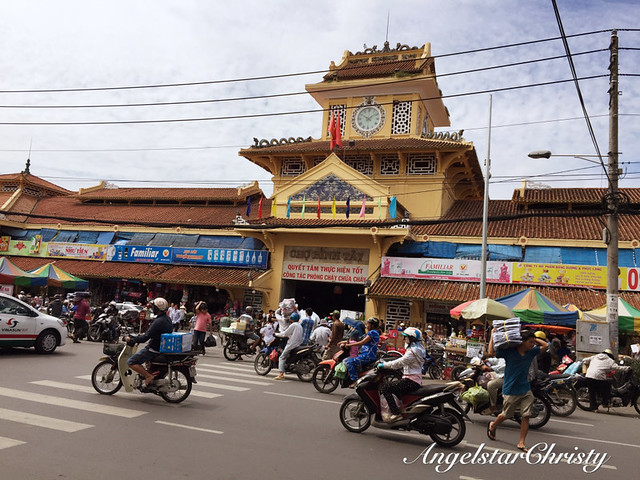
Also simply known as the local Chinatown in Ho Chi Minh City, or Saigon; and located in District 6 of the city.
(You would probably have known by now how the city is segregated into the different districts. I could do a post on that as well later).
Historical Background of Cholon District
Cholon is one of the older districts in the city; existing since its Saigon days.
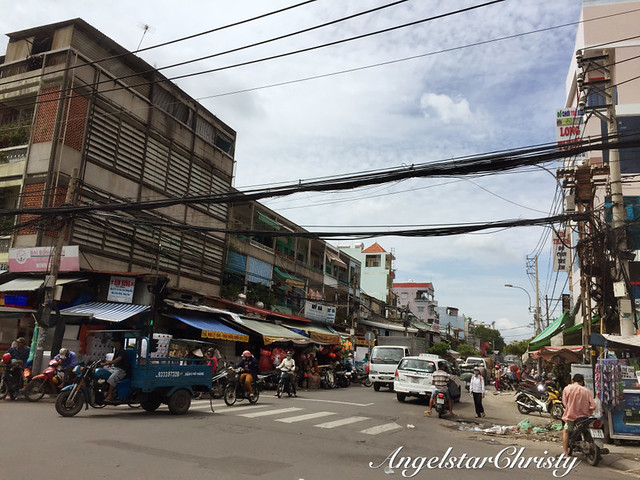
It used to be an independent district, back in 1879, gaining her own city status then.
Its proximity to Saigon (as HCMC was formerly known), by a mere distance of 11km, soon led to the marring of the borders of both cities as they both expand in the coverage of their areas.
In 1931, during the French occupation, they made the decision to merge both the cities of Saigon and Cholon to form an area known as Saigon-Cholon; merely combining both the names for the new district.
The merger was soon dissolved following Vietnam's gain of Independence from the French in 1955; and the name Cholon was officially dropped whereby this part of city, is included and treated as Saigon as a whole.
Situated on the western bank of the Saigon River, the area is filled with a majority population of Chinese, making it obviously the Chinatown of the city.
In fact, the name Cholon itself; though is Vietnamese, was originally derived from a Chinese name; 堤岸 which is Tai Ngon (in Cantonese) or Di' An (in Mandarin), translated to mean "embankment".
The Vietnamese term of Cholon itself, is split to mean Big(lon) Market(Cho).
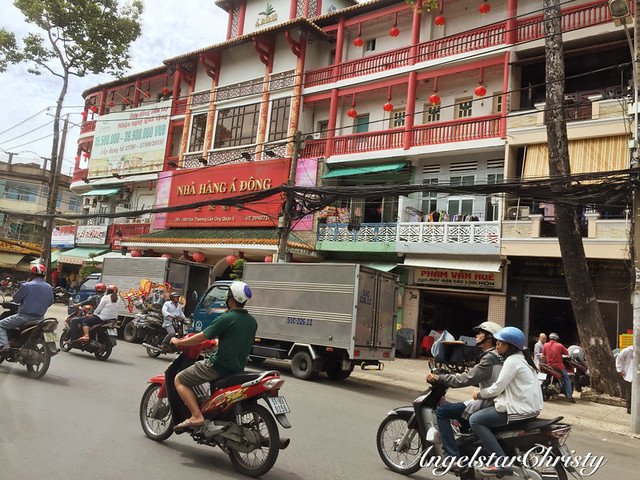
How did Cholon become a Chinese-populated district?
That goes back to the earlier days, to the early settlers; Hoa, who were also the Chinese minority in the country.
The Hoa had been living in Bien Hoa (where they originally hail from) and they have been supporting the Nguyen Lords (whose descendants later ruled in a monarchy period famously known as the Nguyen Dynasty).
Their support incurred the wrath and instigated a rebellion towards them by the Tay Son forces, forcing the Hoa to flee their homes and seek refuge in an area which is now known as Cholon, in the year 1778.
They were killed in a bloody massacre by the rebels of the Tay Son forces, causing them to reinforce their defense and to rebuild their establishment in this region.
Settling in the area by the bank of the river, they had to build high embankments to protect themselves against the flow of the river.
That was how Cholon got its name; from embankment and as they are locally referred to as Tai Ngon by the Hoa community.
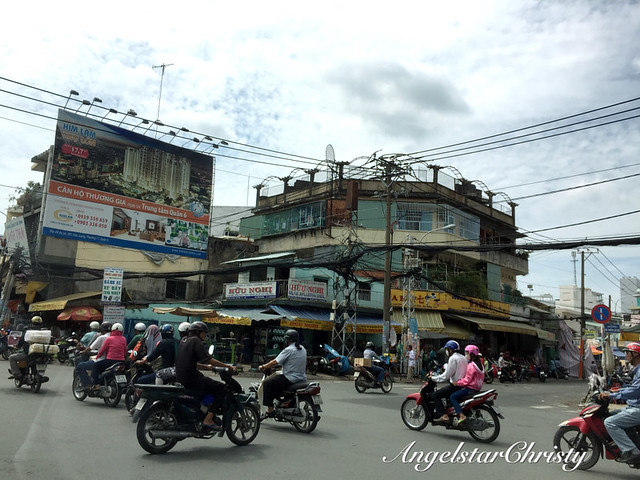
Cholon is located partially in District 5; though generally and mostly in District 6.
There are many attractions in this densely populated district; filled with local shrines, temples, cultural beliefs, and of course, most of all, food.
That is why Chinatown is always such a populated area in most countries.
They are always the place where one can find food.
Asian food, mostly, of course, read the name.
Anyway, for an area which is also known as the Big Market in its Vietnamese name, it is no surprise that they are home to a large-sized market in their turf.
There was even a Black Market which existed in Cholon during the period of the Vietnam War; whereby the deserted and the soldiers from the US Army ran the market and traded in the goods mainly from the United States; particularly the belongings from the US Army.
Binh Tay Market
Binh Tay Market, is just that market (and is probably the main reference to the name of the district)
Located in the District 6 of Ho Chi Minh City, this is actually the new market, following the destruction of the original Old Market (舊街市) in an unknown period.
For some reason, there is not much mention or information on the Old Market, since it was destroyed where the current market is quickly built in its place to continue its extensive function to serve the local population.
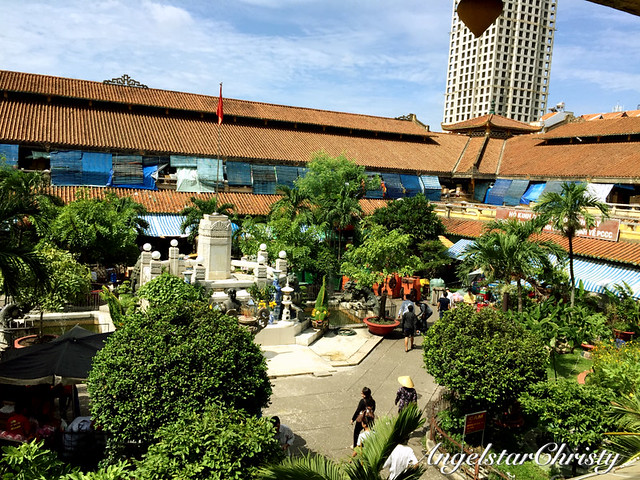
Binh Tay Market was once supported and financed by a local Chinese businessman, Guoyan (郭琰); also known by his Vietnamese name, Quach Dam.
Hailing from Chaozhou, China, he started his humble and poor beginnings by recycling materials from trash before moving on to other trades.
Slowly, he made his fortune and ran his businesses under the name Thong Hiep.
He was locally known to the Chinese in the area by his nickname, "Handicapped Thong".
He died in 1927, but they erected a bronze statue which stood in the center of Binh Tay Market, as a tribute to his efforts.
The life-sized statue was surrounded by four bronze lions and four bronze dragons; which sat under the fountain upon which Thong's statue stood, as his guardians.
The statue is no longer there, and is instead transferred to the Fine Art Museum in Ho Chi Minh City.
In its place, is a smaller glass altar which replaced the statue.
Reasons for the replacement was unknown.
The bronze statues of the guarding lions and dragons were also no longer to be seen, and they were last seen in 2007.
Binh Tay Market, is today referred to as "The New Market of Cholon"(堤岸 - 新街市), by the local Vietnamese-Chinese who resides in the area.
Generally, the local Vietnamese also refer to it simply as Cho lon; Cho Binh Tay, or Cho Lon Moi.
Chinese, in general would even refer to it by its former or original Chinese name, Tai Ngon/Di An (embankment).
This is a huge market, spanning over four streets in which they are connected; mainly:-
North: Confucius Street(Đường Khổng Tử)
South: Hau Giang Street (Đường Hậu Giang)
This is one of the largest and most important commercial market hubs for Vietnam; sustaining the economy for both the local Vietnamese and Chinese and providing that avenue for the local farmers to trade in their harvests; especially for those hailing from the southern part of Vietnam.
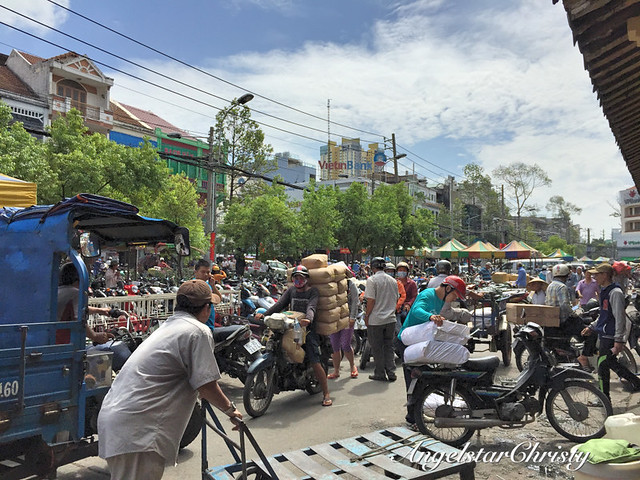

Life at Binh Tay Market starts really early, as early as 5-6am for one to really catch all the action at the market.
Watch the vendors set up their stalls, loading and unloading their goods and generally, the start up of the market before it is bustling in action.

If you are heading here for the action or even to buy fresh vegetables and fruits, Be Early.
The early bird always catches the worm.
This saying is perfectly applied right here, in this market.
For some reason, this market reminds me of Penang's very own Chowrasta Market.
The inner section, or the Dry area of the Market bears such striking resemblance to Chowrasta Market
(Penangites would know what I'm talking about)
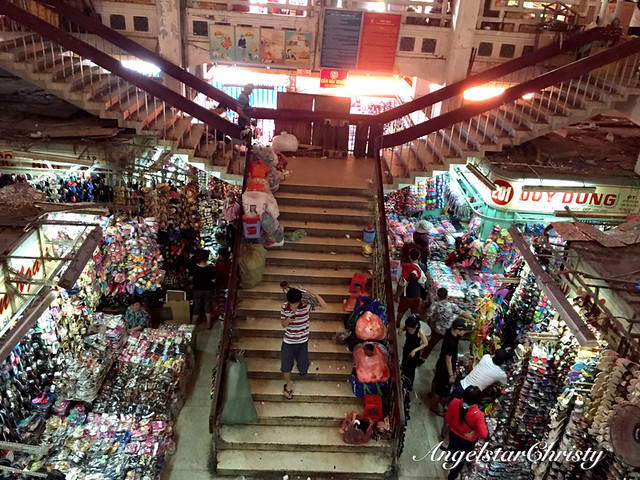
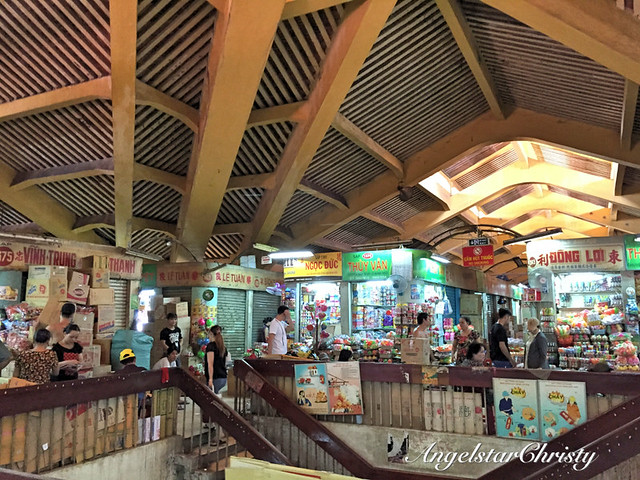


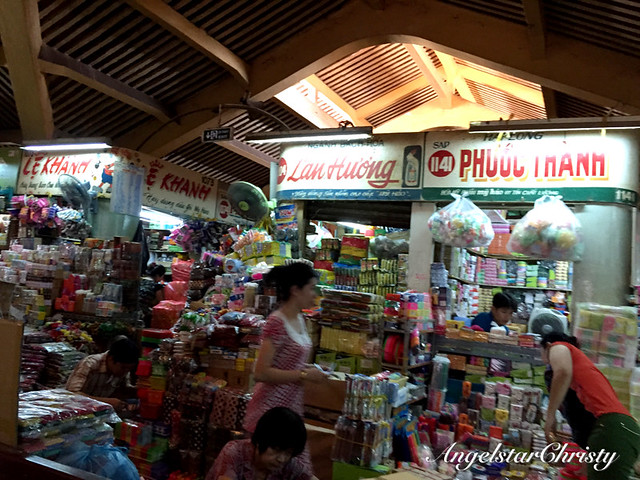
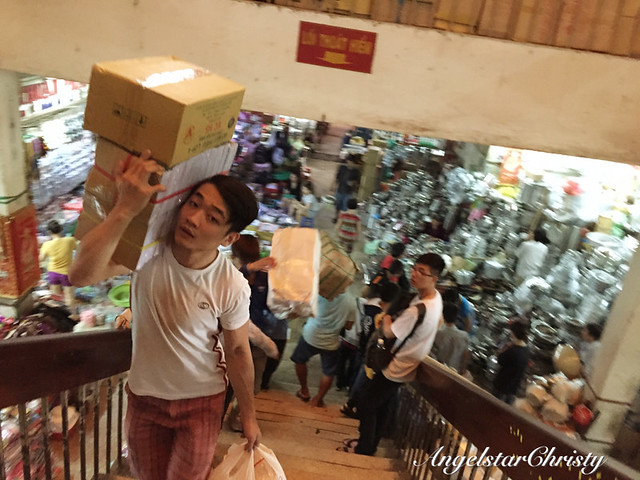
It is fascinating, to walk through even the dark alleys and corridors.
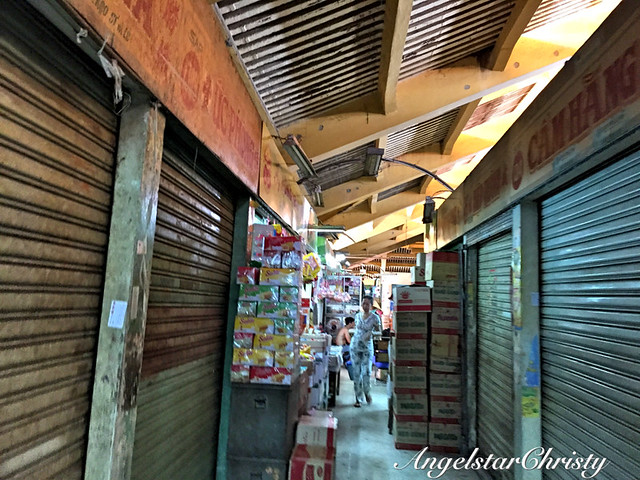
I was there at about 9am, so understandably, I had already missed some of the early bird traders who had closed their shops, inside the market.
Outside, the market was still bustling and rowdy.
Well, just like your usual market.
Busy, and Noisy.
The section, between the inner and outer section, shaded by tarpaulin.
This is where you can find a mix of dried goods, dry cooking ingredients, cooking utensils, etc.

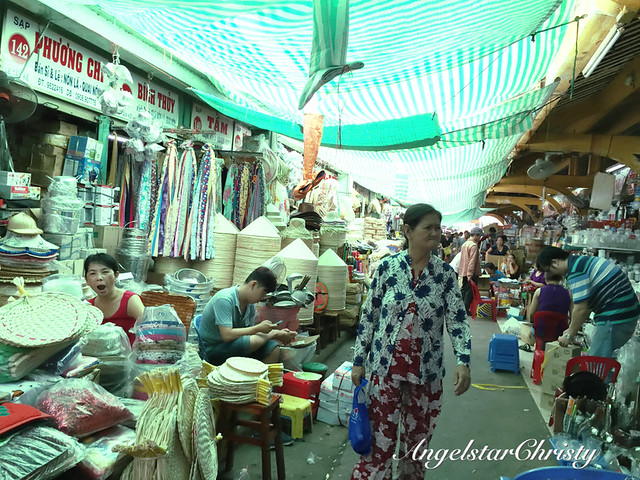

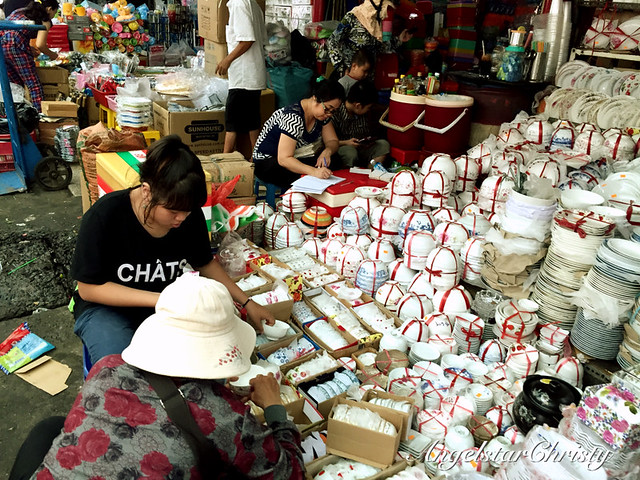

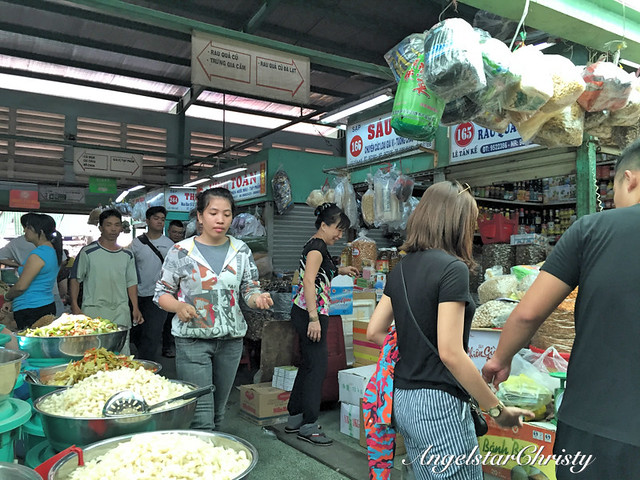
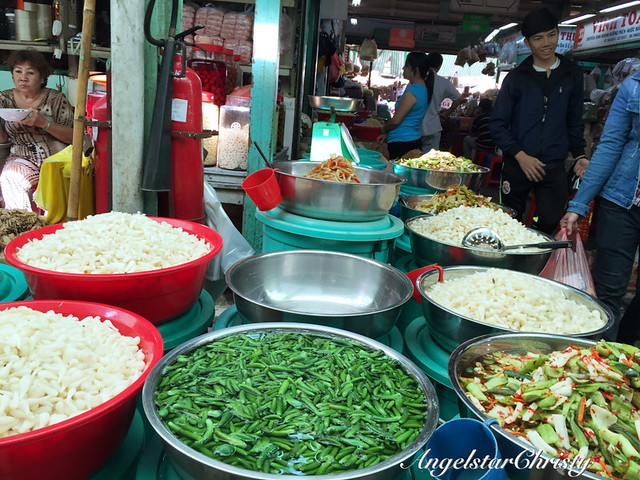
Food section, where you can sit down to a bowl of noodles.
The vendors will be beckoning you to their stalls.
All of them.
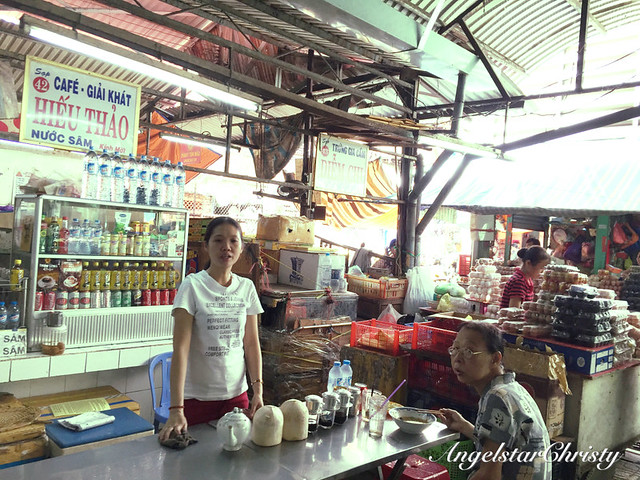
Well, what's a market without a little action?
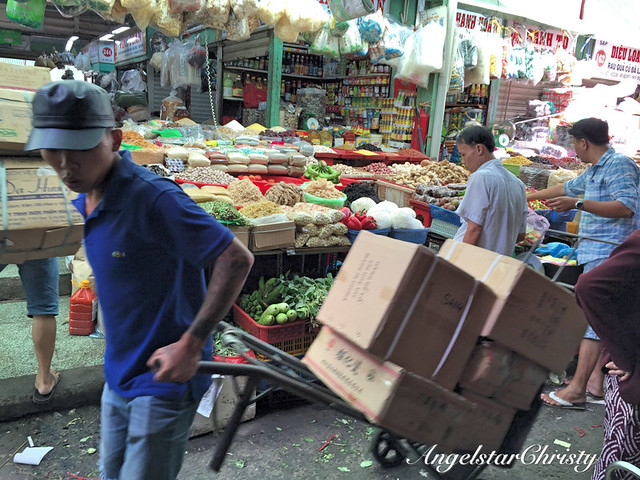
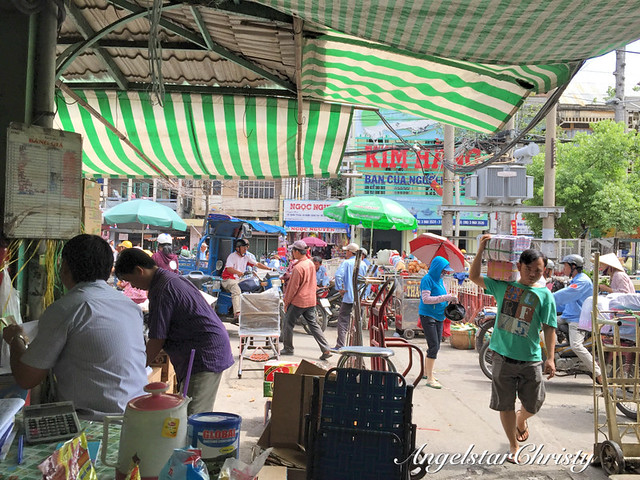
After all, that's why they always tell you that if you were talking loudly or behave in a rowdy manner, you are acting as if you are in a marketplace.
This is where it all fits in.
Perfectly.
Outside; the outer section of the market

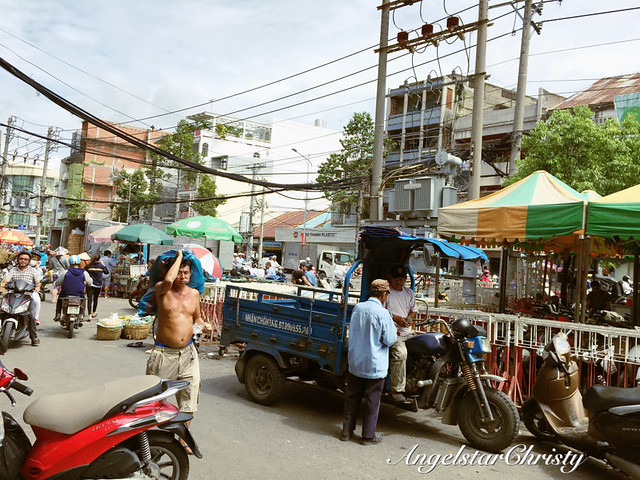
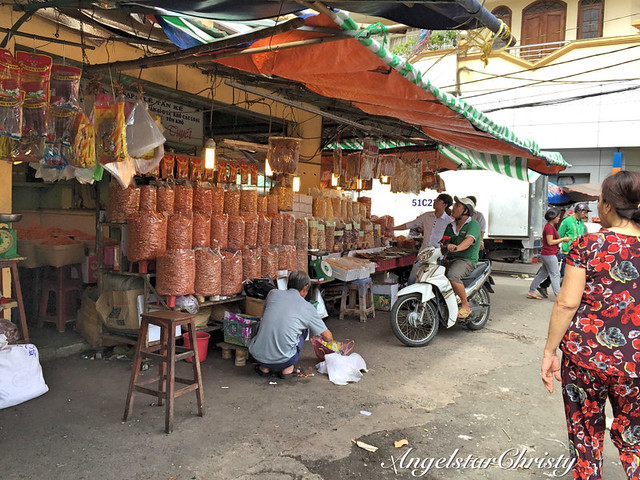
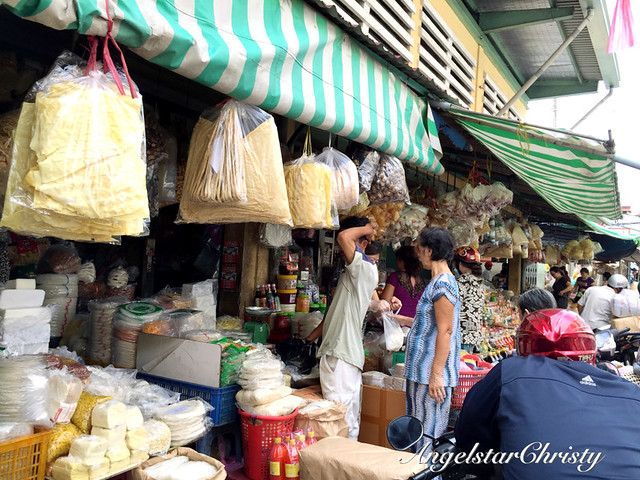
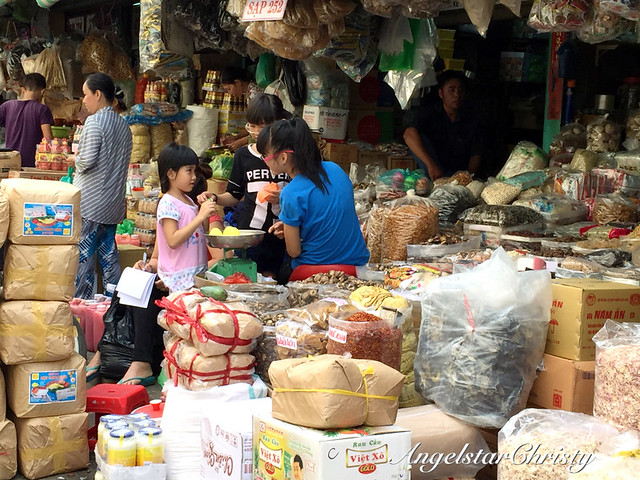
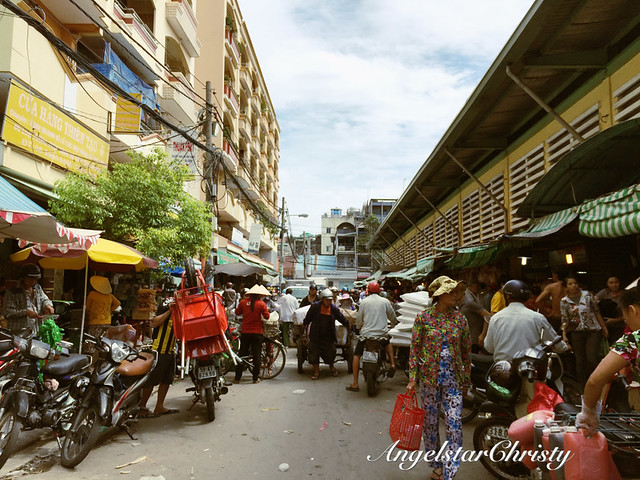
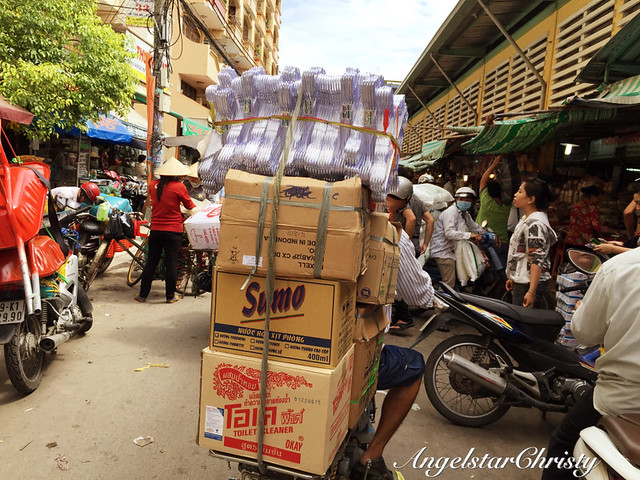

More stalls, on the sides of the streets
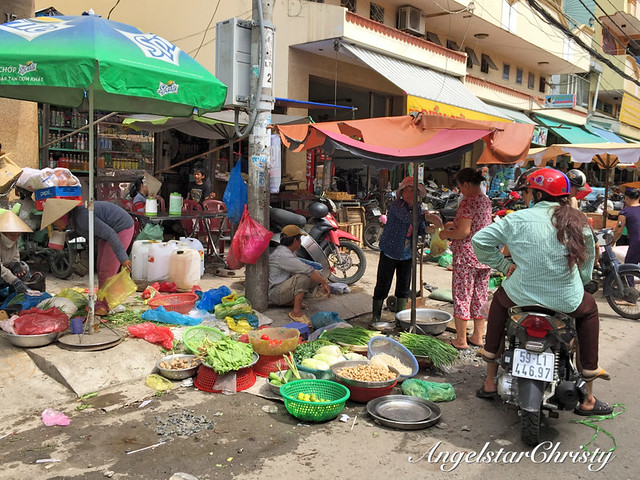
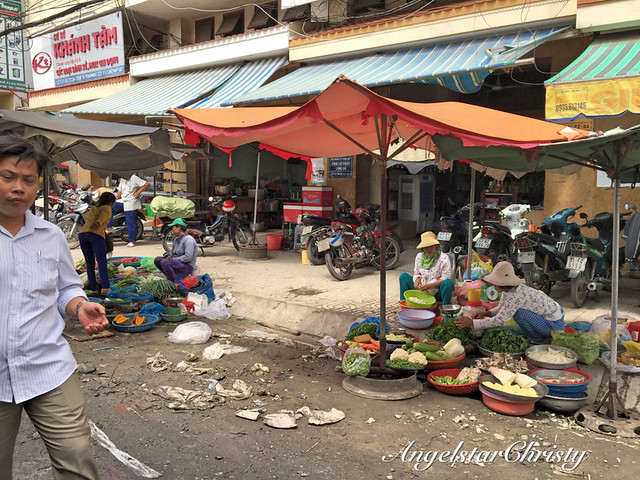
This is one of my favorite places, or markets in Ho Chi Minh City.
For some reason, it is just captivating.
Perhaps it is the local culture, or just the overall atmosphere.
And this came from someone who does not even like markets, let alone visit/frequent markets.
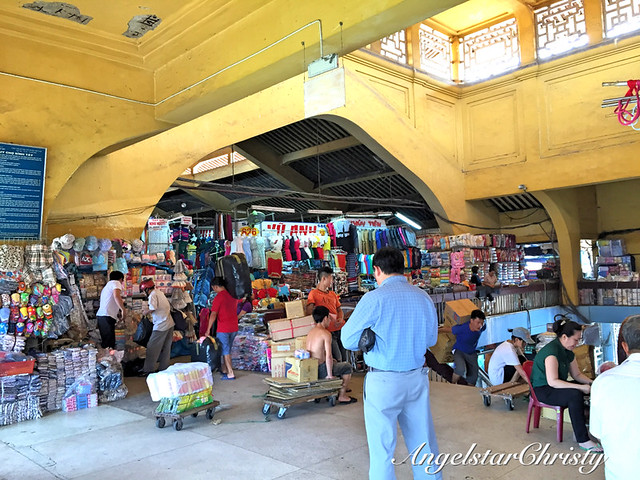
There's just something about Binh Tay Market.
I am captivated by the colors and just watching it all in action.
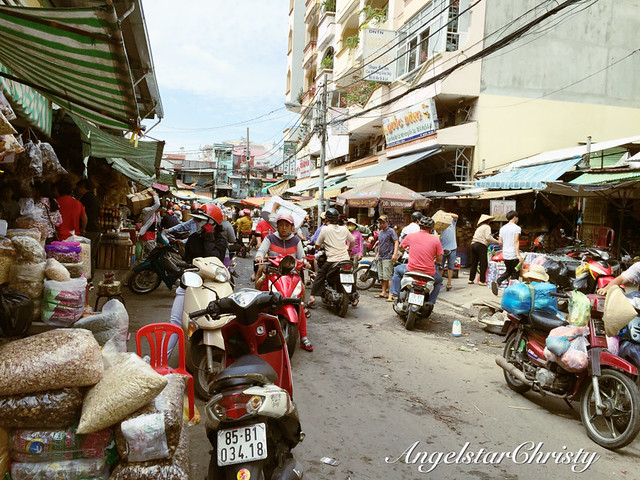
Most of the goods here are sold in bulks; or wholesale trade.
The vendors here don't speak a lot of English.
Just point or use a calculator, or it's best if you have a local Vietnamese with you to help with the communication.
Otherwise, sign language is generally understood.
Bargain wisely and carefully, they don't really like a lot of haggling (well, no one ever does), so do your research.
Prices are more reasonable compared to other commercial markets.
This is where most of the locals recommend or come themselves.
Take extra care of your belongings when you are here, and practice caution just like any other cities.
The locals and even the vendors would even remind you to be wary of your surroundings and be watchful of your belongings, especially camera, cell phones and for ladies, handbags.
Snatch thieves are not uncommon here.
So, be careful.
Well, generally, you will always need to be alert and cautious wherever you go anyway.
Don't forget that.
You do not have to agree with me.
This is based on my personal experience and is told in a subjective manner, entirely from my perspective.
Photos all belong to me and are copyrighted.


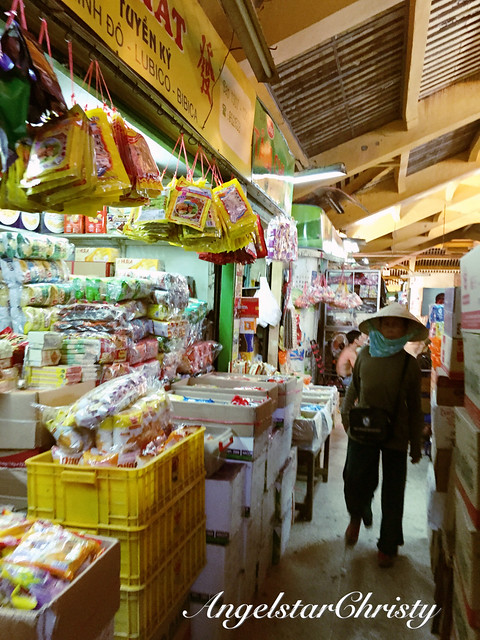

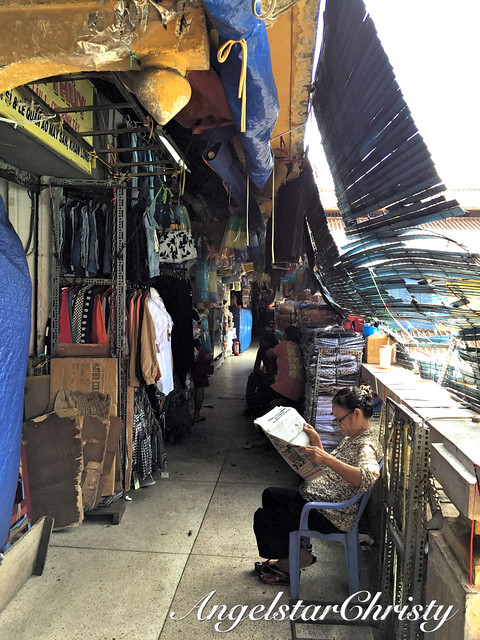
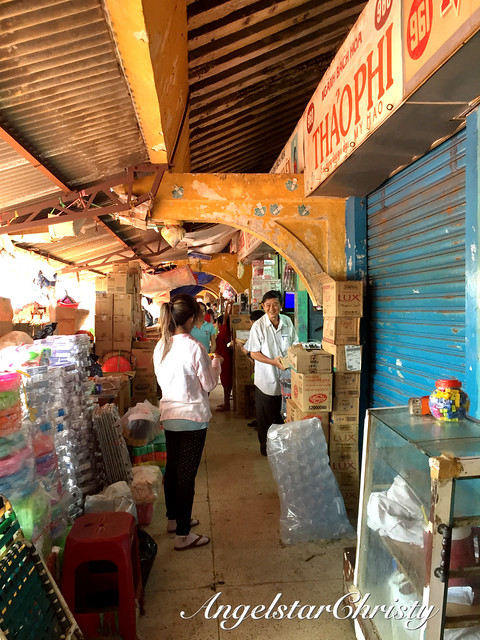
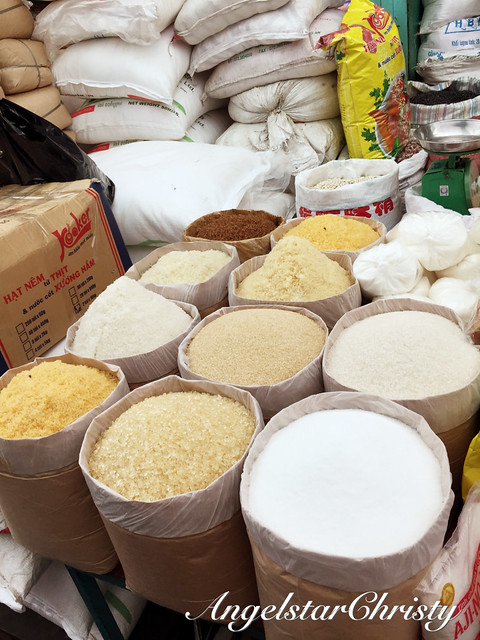


1 comments
Great article! So detailed and thoughful. Your pictures bring about real-Saigon-feeling :)))
ReplyDeleteI recently published an article about China traditional food in Cholon: https://blog.inspitrip.com/3937/5-must-try-food-chinatown-ho-chi-minh/
If you like the article, link to your site. I'll link back to your site too :))
Cheers!